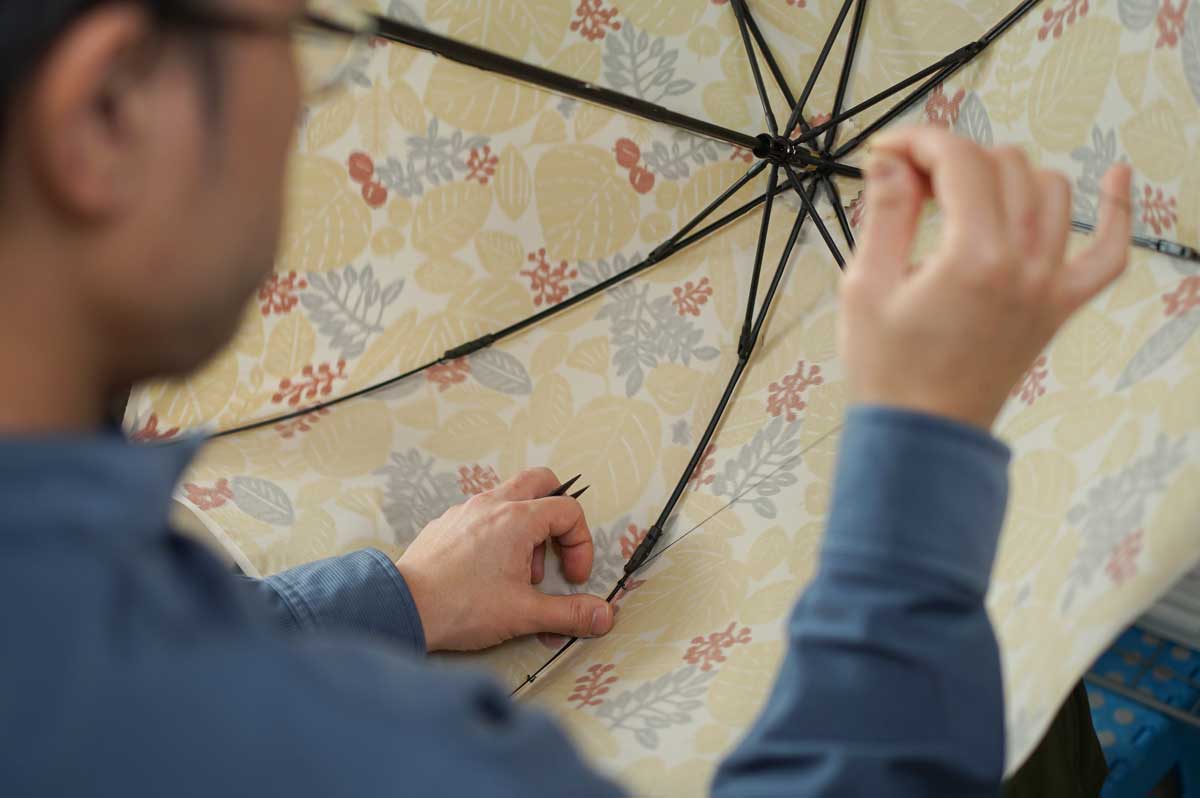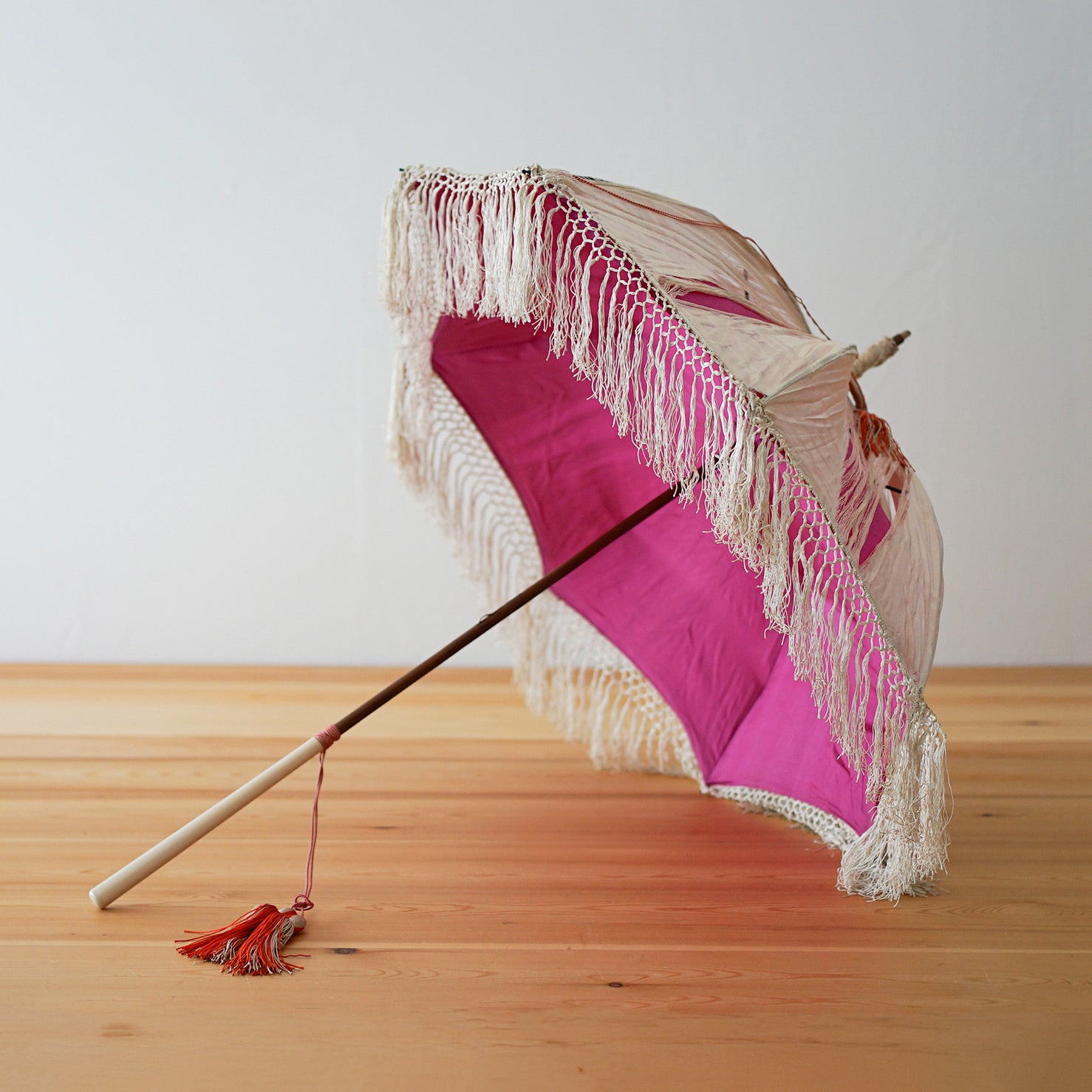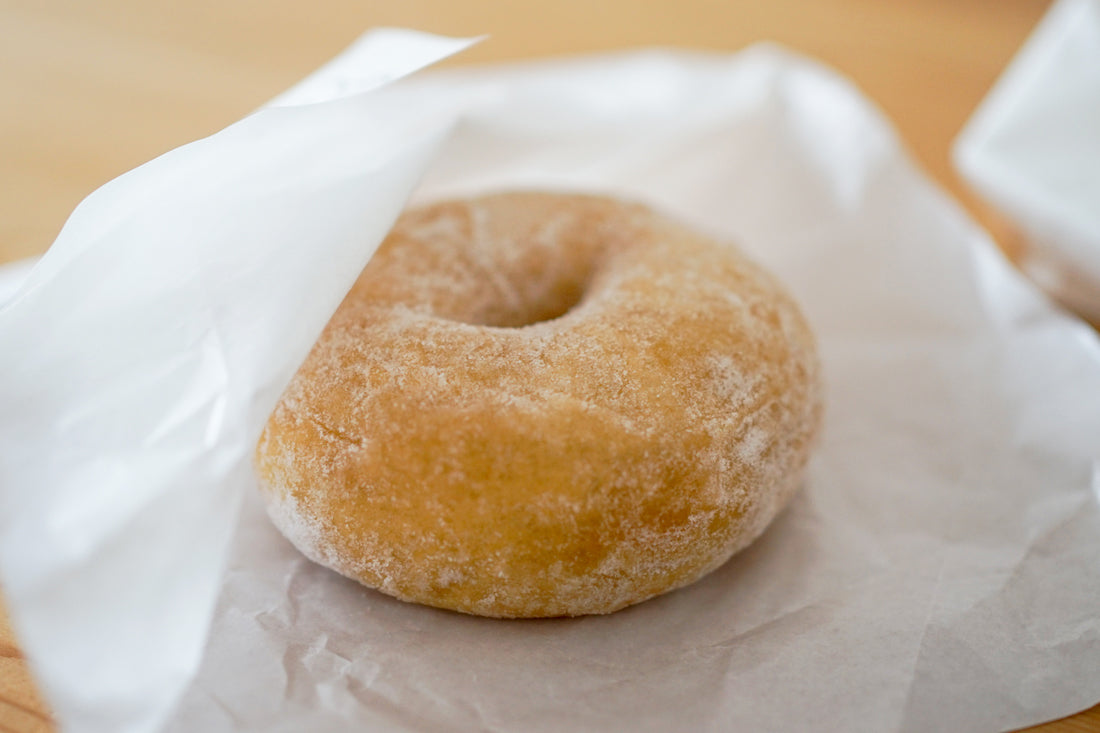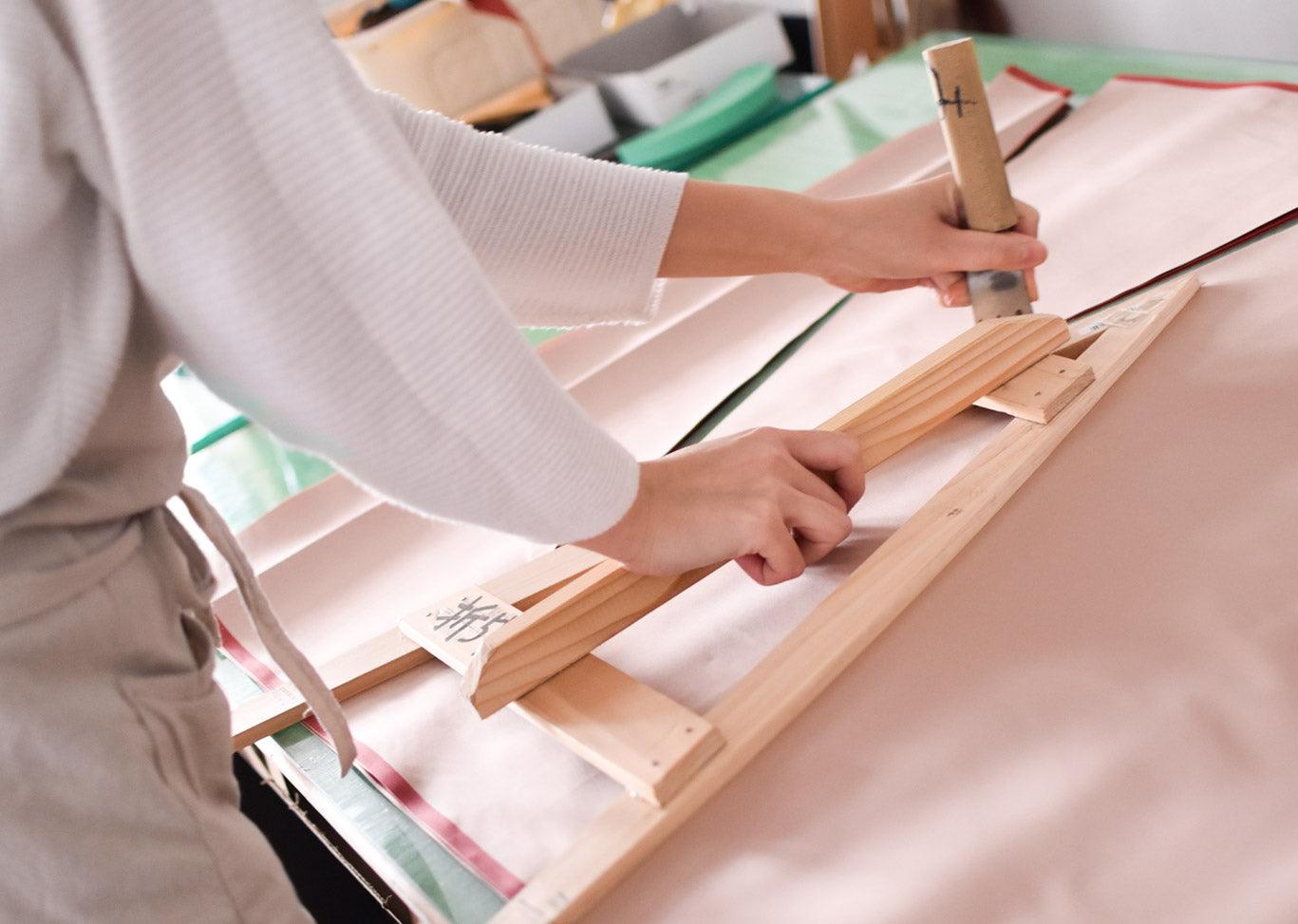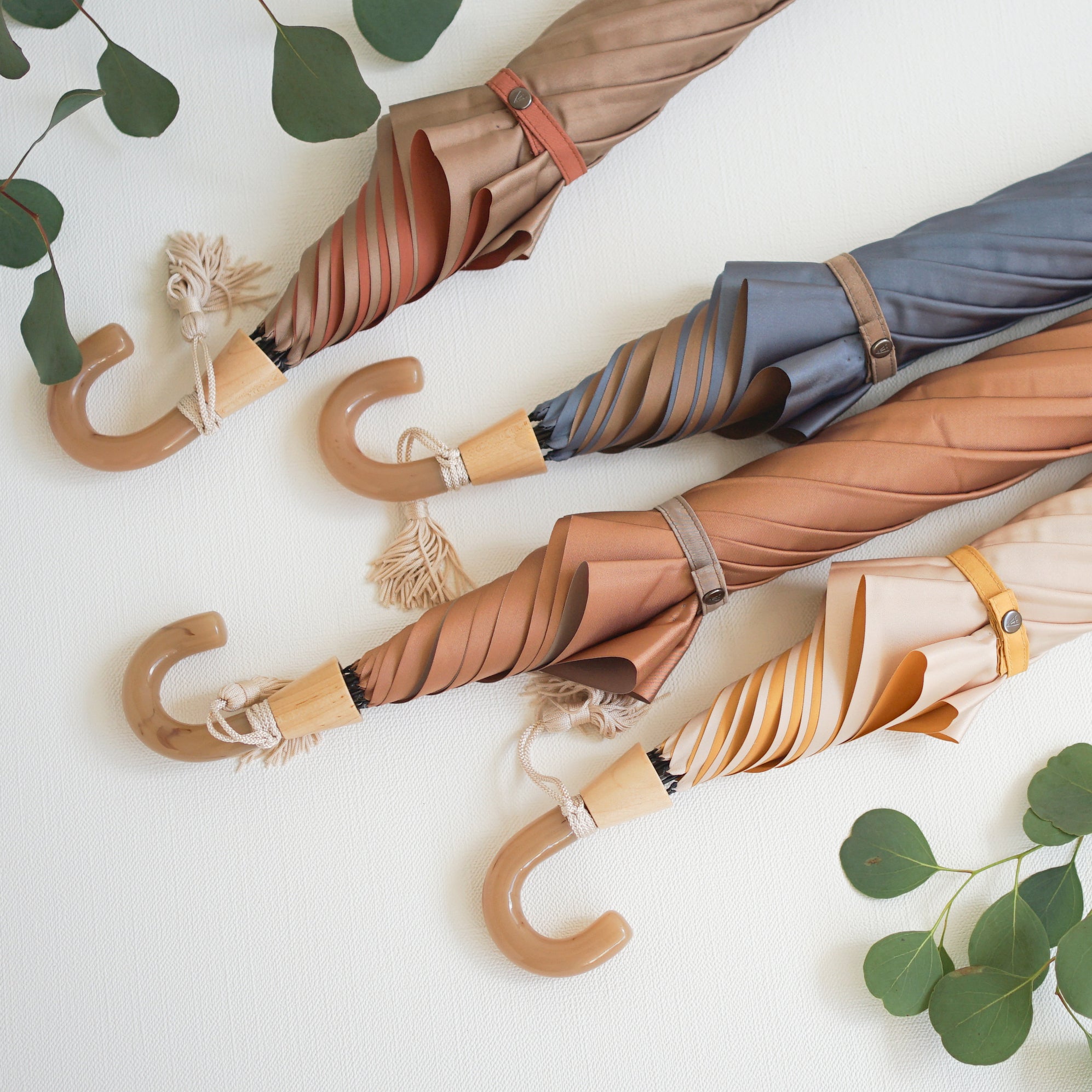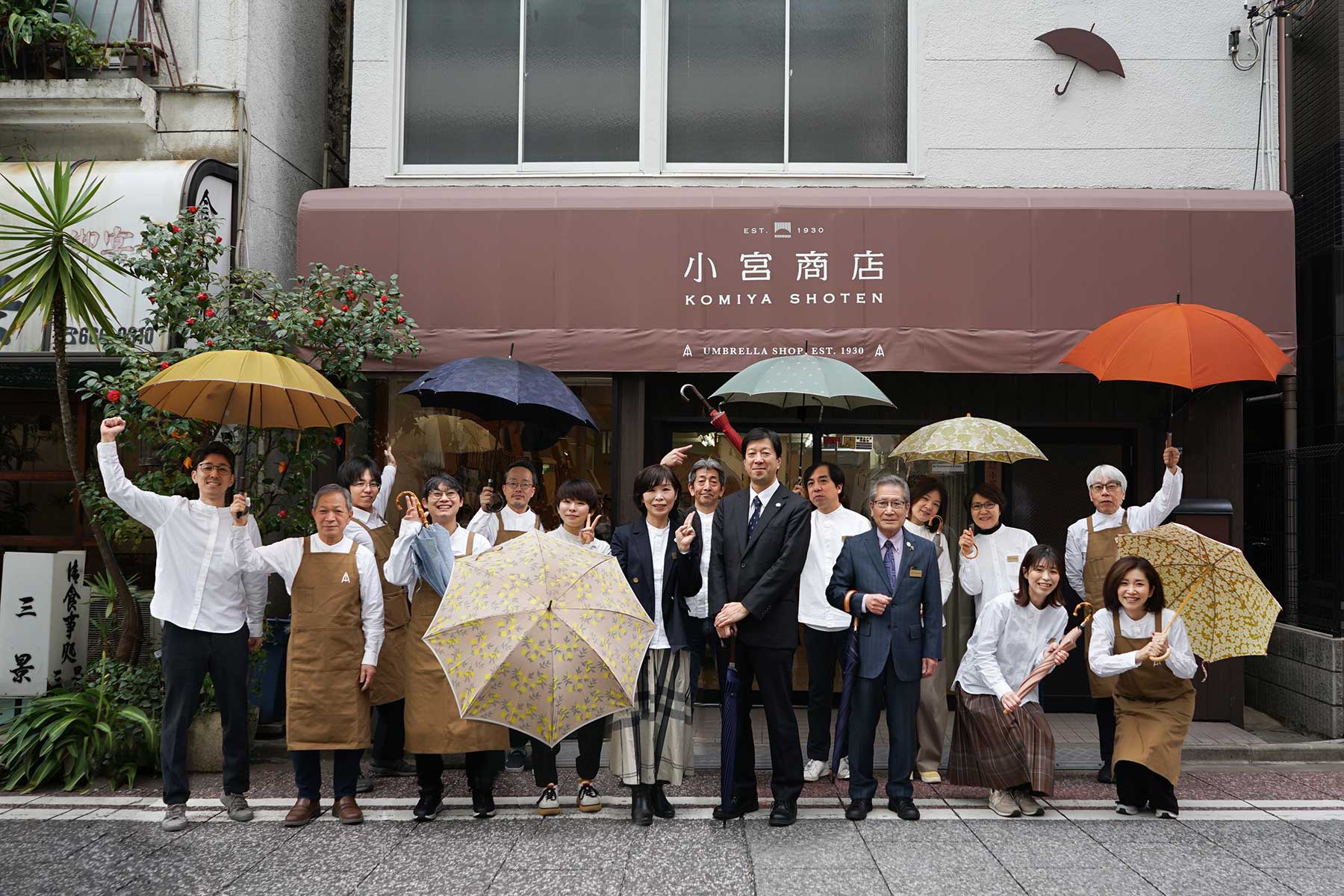My name is Kobayashi and I am an apprentice umbrella maker.
A while ago, Nikkei MJ's annual ranking of hit products was released.
When I start seeing and hearing this everywhere, it makes me feel like it's the end of the year!
The champion of the East is the Rugby World Cup, and the champion of the West is cashless.
Like many others, I was only a casual fan of the Rugby World Cup, but my whole family got very excited.
Now, did you know that just as the hit product rankings are divided into East and West, there are also East and West umbrella "stitching" types?
As we have mentioned several times, there is a process called "middle stitching" in which the umbrella fabric is sewn together.
Two pieces of fabric cut into an isosceles triangle called a "koma" are layered together, the needle of the sewing machine is dropped onto the edge of the triangle, and the pieces are sewn together again... This process is repeated to create a round fabric cover, but the production method differs depending on the region, such as whether the sewing starts from the apex or the base of the triangle.
The technique of sewing from the top is called "Kanto stitch" and the technique of sewing from the bottom is called "Kansai stitch".

Western umbrellas first arrived in Japan during the Edo period.
Nagasaki appears to be the first place to find recorded documents, but it was after the arrival of the Black Ships that awareness of the Western-style umbrella increased dramatically.
It seems that umbrella making in Japan began when someone took apart an imported Western-style umbrella and tried to faithfully reproduce it, saying, "Okay, let's try and make something exactly like that!"
The sewing method used on this occasion was to sew the piece from the top.
For this reason, this sewing method, now known as "Kanto stitch," is said to make it easier to create a beautiful umbrella shape, as the sewing starts from the center of the umbrella circle.
However, it is difficult to produce efficiently.
When cutting fabric, slight differences in the angle and pressure used with the knife, as well as the characteristics of the fabric, can result in slightly different sizes of the pieces that are sewn together.
If you sew together pieces of different sizes with a sewing machine, the hems will obviously not match.
A cover with a misaligned hem will not form a nice circle, meaning it cannot be sold, so it will have to be re-sewn.
When sewing the middle stitch, there is no need to mark or baststitch in advance, but rather the stitching is done "on the spot" using a special tool attached to the sewing machine.
Do not pull on the fabric in an attempt to straighten out the hem as you are sewing, as this will cause unnecessary wrinkles in the seams.
Before starting sewing, it is necessary to align the hems and check that the sizes of the stitching links are uniform, so this inevitably takes time.

...This story about Kanto sewing has gotten quite long, so I'll take a break here.
In the second half, we will continue to bring you the nerdy story of middle stitching! (^^)


